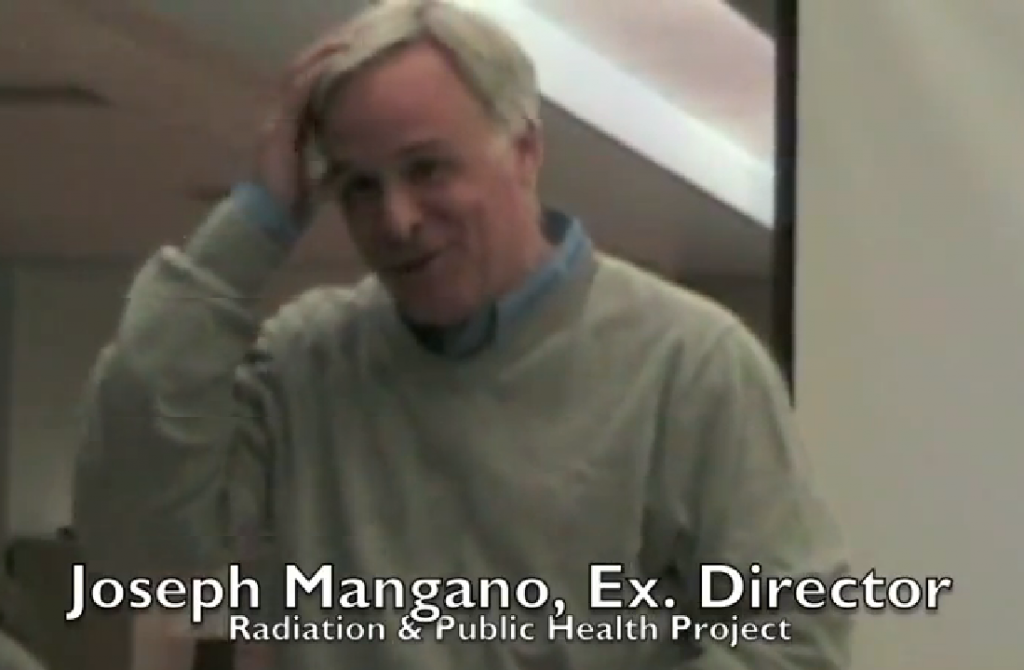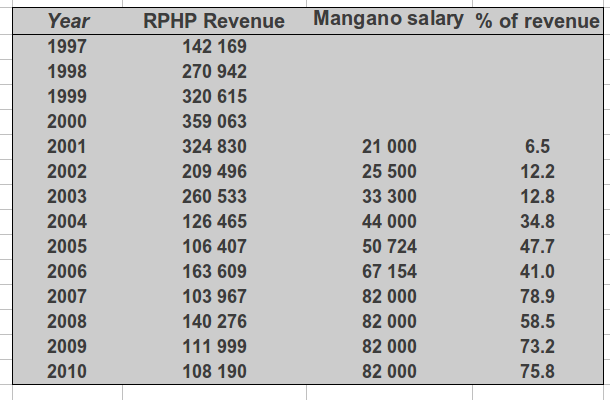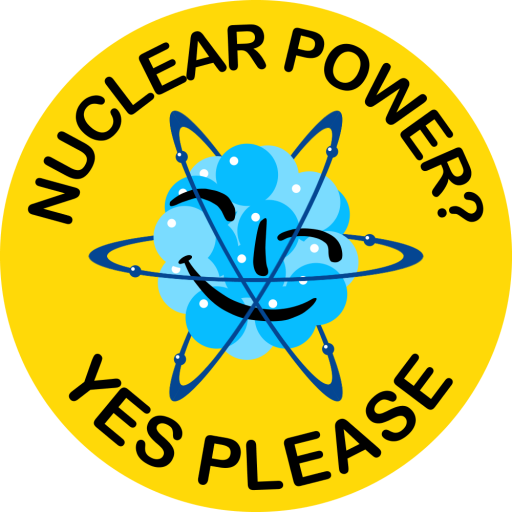Last updated on March 1, 2013
Joseph Mangano has once again puffed too hard on the alarmist pipe, now with a new article in the August 15 edition of the political newsletter Counterpunch. We recognize the pattern from before: First spread a bit of scaremongering disguised as research in some fringe media. You mix the alarmistic message with some caution in order to cover your back in case somebody will put you to task, knowing that the alarmistic part will advertise itself, be inflated and spread through the internet and possibly some news media. Then some time later you publish an extended study with a similar message in a scientific journal with low quality threshold.
- Joseph Mangano seems happily surprised that people once again are falling for his junk science.
This time the title of the Counterpunch article starts with the rather cynical Let the Counting Begin followed by Fukushima’s Nuclear Casualties. It is just a calculation exercise for Joe, and it could have been an interesting one if it weren’t for the fact that:
- he is counting dead people in Japan during 2011, claiming that the cause of death for 38,700 of them are unexplained, with the implication that radioactivity from Fukushima is the cause, and
- a closer scrutiny shows that once again he is handling the data in a very irresponsible way in order to push his own anti-nuclear agenda.
Summary of Mangano’s nonsense
In the article Mangano makes a number of statements, based on his data mining in the health statistics data base of the Japanese Ministry of Health, Labour and Welfare (MHLW). A more detailed attempt to scrutinize his claims is available in the NPYP Deep Repository for junk science. Here is a summary of his statements, with comments (in red) about their validity:
- Mangano claims that the total number of deaths in Japan rose with 4.8% during 2011, compared with the “normal” increase of 1.5%. There is no “normal” increase of 1.5%, though for the last 20 years the average increase in the number of deaths (due to an ageing population and decreasing birth rate) has been about 2%. For individual years the increase varies drastically, being above 4% six times since 1990. Thus the 4.8% increase during 2011 is not very spectacular.
- Out of the about 1.2 million Japanese that die every year the 4.8% increase means an excess of 57,900 deaths compared with 2010. When subtracting the victims of the tsunami and earthquake there is still an excess of 38,700 deaths with no obvious cause. Mangano fails to mention that also in 2010 there was an “excess” of more than 55,000 deaths, compared with the year before. Yes, that is 55,000 excess deaths without a tsunami, without the release of radioactivity, and without alarmistic claims by Mangano.
- “38,700 deaths with no obvious cause”, or “38,700 additional unexplained deaths” is repeated, implying that maybe Fukushima did it. The majority of the deaths are not unexplained, they are classified into about 130 different categories, carefully filed by the MHLW. There is however a category called “Other causes” which include those deaths that can not be classified according to the other categories. For 2011 this category has about 5,000 deaths, which may still sound alarming. It should be noted that this is only 150 more than for 2010, and the variation between different years may be much larger than that. Furthermore, those deaths from “other causes” are not mysterious or due to some death ray directly from Fukushima, they just do not fit into any of the other 130 categories.
- There was a sharp increase in the category “Other causes” for the months following the Fukushima nuclear meltdowns. This finding is consistent with the increase of deaths in the U.S. that Sherman and Mangano published in 2011. There are other time periods with sharp increases of similar magnitude, see the plots below. Mangano fails to mention this, and he fails to mention that his earlier article is a fine piece of cherry picking without any scientific value (it could of course be interesting material for a thesis in psychology on alarmistic behaviour or notorious dishonesty…).
- Mangano states: “A further look is in order”. It seems that Mangano fails to look further, he only looks as far as he needs to be able to make alarmistic statements, ignoring the broader picture. A further look is obviously not in order for those who want to perform cherry picking.
- “Nobody should yet race to conclusions that 38,700 Japanese died from Fukushima exposure in the first year after the disaster.” If Mangano sincerely meant that sentence he would never have written the article in the first place.
- “An early estimate of 38,700 additional unexplained deaths in Japan in just one year must be taken seriously, and underline the need for Fukushima health studies to be made a top priority, in Japan and in other affected nations.“ Correct, except for all the issues above. Fukushima health studies should have (and already have, no matter what the alarmists say) high priority. But it is better to let real researchers perform it, charlatans and fearmongers who think that cherry picking is science should be ignored.
The plots below show the annual increase for the number of deaths in the category “Other causes” from the MHLW data base. First in the by now traditional “Mangano cherry picking style” with only the year 2011 displayed (left), then with a few earlier years included (right). The increase (or decrease) is defined as the number of deaths in a given month divided with the number of deaths for the same month the year before. There are more plots in the related forum post (here).


Stay tuned for new articles and alarmistic press releases
So what can we expect after this? Most likely an article a couple of months from now, and it is very likely that it will be published in the International Journal of Health Services (IJHS). For some reason Mangano seems to have a free pass to publish his so called research there, no matter the quality of it. Why would an academic journal repeatedly publish his nonsense if they want to claim competence on the subject?
When IJHS in December 2011 published the article by Sherman and Mangano in which they wanted us to believe that 14,000 people died in the U.S. due to Fukushima it was met by criticism from many directions (see links in this post). Barbara Feder Ostrov of Reporting on Health wrote about it, and received a response from the IJHS editor-in-chief, Vicente Navarro, who used some quite arrogant phrases, for instance “There are certain norms that should be respected in academic circles.” He commented on the quality check of the article in the following way
the paper was reviewed by 2 outstanding scholars in the subject being discussed. We trust our referees’ judgment.
Considering that the scientific subject of IJHS is different aspects of health policy in different countries, often with a political touch, the works by Joseph Mangano are somewhat outside of the main field. Health effects from radioactivity is definitely out of their field, no matter that the journal has a category named “The Nuclear Industry and Health”. It is a typical alarmist trait to publish articles in journals that are not specialized in the particular subject that the article deals with. But maybe we should trust Vicente Navarro in this case, did he appoint referees with the proper scientific background?
The identity of referees should be kept secret, but it is not far-fetched to assume that one of the “outstanding scholars” is the renowned Samuel Epstein, who, besides receiving the 1998 Right Livelyhood Award is a member of the IJHS editorial board. We do not know if he was involved as referee for the last paper, but he has admitted to having been referee for earlier works by Mangano, here is an extract from an article in New York Times (11 November 2003):
Samuel Epstein, chairman of the Cancer Prevention Coalition and a professor of environmental and occupational medicine at the University of Illinois, has reviewed some of Mr. Mangano’s papers for journals. He called the group’s research ”good, careful work.”
”While they were somewhat overexuberant in their initial stuff,” Dr. Epstein said, ”they’ve calmed down and I think they are producing solid scientific work that stands critical peer review.”
Ok, considering Samuel Epsteins long standing research in causes for cancer and epidemiology he may be a trustworthy referee. However, a check of his biography and publication list reveals no scientific work related to radioactivity, and it is a mystery why a renowned epidemiologist would buy into the faulty statistics of Mangano. Unless, of course, they are buddies. And in fact they are. Epstein and Janette Sherman know each other at least since the early 1990’s through their involvement in the Cancer Prevention Coalition (examples where Sherman endorses the writings of Epstein, from 1992 here and 1996 here). It is not clear when Mangano and Epstein started to rub shoulders, but here are a few examples on articles where it is clear that all three of them have common interests and co-author articles together:
- 15 Januray 2006: “More Nuclear Reactors A Public Health Threat“, Joseph Mangano and Samuel Epstein
- April 2007: “Nuke Accident Would Dwarf Oil Spill“, Samuel Epstein and Joseph Mangano
- 27 July 2009: “Cancer Risk of Aging Reactors“, Joe Mangano, Samuel Epstein and Rosalie Bertell
- 4 August 2009: “Nuclear Power Causes Cancer: What Industry Doesn’t Want You To Know” Samuel Epstein mentions Mangano’s so called research.
- 20 October 2009: “New Study on Cancer Risk from Atomic Bomb Fallout By Measuring Radiation in Baby Teeth“, John M. Fowler, Janette M. Sherman and Joseph J. Mangano, with endorsements by Epstein.
- 25 June 2010: “The FDA, Toxins and Your Body“, Samuel Epstein, Lennart Hardell (!), Vicente Navarro, Janette D. Sherman, Quentin D. Young
- 16 July 2010: “Reflecting on the 65th Anniversary of the First A-Bomb“, Samuel Epstein and Joseph Mangano.
- 16 August 2012: “As More About Fukushima Contamination and Casualties Is Known, Japan Proceeding Without Nuclear Reactors“, Samuel Epstein and Joseph Mangano
As seen, also Vicente Navarro was a co-author of a work together with Epstein and Sherman. Furthermore, Navarro writes articles in Counterpunch (for instance here and here), it’s a small, small world…
It is of course very convenient for Sherman and Mangano to publish articles in journals where two of the editors are people you collaborate with. On the other hand this is something that can happen in any scientific field, even among top quality researchers. Many research fields are not large enough to allow referees and article authors to be completely independent of each other, that is one reason why it is important to keep the identity of the referees secret in order to promote scientific integrity before loyalty with your peers. But it is rare to see such pseudoscience systematically being accepted in quality journals, since 1994 Mangano has had 8 articles accepted in IJHS, plus a few freebies to respond when somebody has the audacity to question his findings.
No matter who were called as referees for the article, it is clear that they were not selected for their competence in relevant scientific fields (or at least have some basic knowledge of statistics) but rather for sharing similar opinions about nuclear power and fear about radioactivity. A competent referee with some self esteem would never accept that the first reference of the article is the Counterpunch article that started the whole nonsense. The contents in that article were cut to pieces on this blog, in Scientific American and elsewhere (see the links in our blog post). A referee who does not think twice about that is either lacking the relevant competence or has no scientific integrity. Obviously those traits were not important when Navarro selected the referees. In my opinion this reduces the credibility of Navarro and his journal to close to nothing, and Navarro’s attempt to lecture Barbara Feder Ostrov with his “There are certain norms that should be respected in academic circles” falls back onto himself. Not that he will get the joke, do not become surprised if he happily lets Mangano’s next paper through for another round of alarmism dressed in a scientific coat. The rest of us can just wait for it to happen, though meanwhile we can speculate about how many Japanese that Mangano will have “killed” in the next article.
What is Mangano’s driving force?
Does Joseph Mangano believe in Joseph Mangano? As with his predecessor Ernest Sternglass most of his research (and credibility) has been pulverized again and again (here are some examples from NEI Nuclear Notes), and considering all the (valid, very valid) criticism that he received after the cherry-picking exercise last year it is very difficult to understand why he goes on in the same manner (see for instance the first 5 minutes of this talk from March 2012). Why doesn’t he shape up and try to get the junk out of his science? And just like with characters like Helen Caldicott and Chris Busby it is difficult to know for sure if they really are convinced of what they are saying (out of ignorance, political or personal devotion, the Dunning-Kruger effect, or some other kind of megalomania) or if there are other reasons for why they keep playing this game. Money for instance?
The Radiation and Public Health Project, Inc. (RPHP) is registered as a public non-profit educational organization, and information about its revenues and expenses are publically available, for instance here. Those people within the organization who receives salary from it are also listed. Below is a compilation of the revenues for RPHP with Mangano’s salary included, and how many percent of the total revenues that goes to his salary.

Considering the purpose of the organization it may seem remarkable that such a large fraction goes to Mangano’s salary. The rest is for costs of equipment, web site, other administrative posts, and 10-20% for research. The latter may sound strange, shouldn’t most of the money go to research? Here one should keep in mind that money for research is mainly spent on salaries for the researchers, they need to eat and have a place to sleep just like other people. But the development over time is clear, now Mangano more or less is RPHP, and he can live rather well on the annual salary from donations and other fund raising that enters the RPHP account. Add to that the possibility that he might receive money from speeches, books and the occasional role as expert witness in court cases. He may not be very rich, but considering that his research is more or less worthless it is probably very amusing for him to see that he can make a decent living out of scaring people.
RPHP may be a non-profit organization, but no matter if Joseph Mangano believes in what he is doing or not, it certainly seems to be profitable for him.
Mattias Lantz – NPYP

Warning: Declaration of Social_Walker_Comment::start_lvl(&$output, $depth, $args) should be compatible with Walker_Comment::start_lvl(&$output, $depth = 0, $args = Array) in /var/www/nuclearpoweryesplease.org/public_html/blog/wp-content/plugins/social/lib/social/walker/comment.php on line 18
Warning: Declaration of Social_Walker_Comment::end_lvl(&$output, $depth, $args) should be compatible with Walker_Comment::end_lvl(&$output, $depth = 0, $args = Array) in /var/www/nuclearpoweryesplease.org/public_html/blog/wp-content/plugins/social/lib/social/walker/comment.php on line 42
EXCELLENT. Well done.
Excellent article and exquisitely thorough! This one’s a keeper.
The end begs the question, what can the common Joe do to help counteract this FUD poison before it indelibly sinks into the fears of the voting public and affects the public health and energy security of this country? I write email questioning this “research” to Counterpunch, FDA and the NRC no less but all I get are crickets. (at least I got a “thank you for writing” from Greenpeace!) Are there any nuclear pro big boys we can support/urge/push up to the media’s plate to challenge these guys assertions?
Thanks and keep up the good work!
James Greenidge
Queens NY
Good work. Thank you! Caldicott was spreading this one by Busby http://www.youtube.com/watch?v=oliHTaHhDYc&feature=youtu.be…Very amusing with comical numbers whose silliness he doesn’t seem to grasp or at least believes that his audience will not notice. He feels that this is one of his most important works. (Number of alphas by 800 years seems off by a factor of 100 probably, pressure estimates messed up, fantasy about cylinders exploding against external bentonite/rock pressure when natural gas is routinely stored at similar pressures in weaker containers, amount of actinides to produce his alphas is perhaps about 30 times higher than the real numbers (over 100000 years), we are also supposed to have 2000 Chernobyls from this …I doubt that even with his pressures being released immediately in right direction, the waste cylinder cannot even climb the gravitational well in case we would have just 500 meters deep open pit of 500 , most activity t>1000 years from solids like Am and Pu, which spread…well…how exactly do their spread? I am sure Busby “knows”….I didn’t bother to check things properly, but rapidly got a feeling that as usual his excercise would get a fail rating in any self respecting kindergarten. Should be stored in deep repository.
Hi Jani-Petri, thanks for the comments. We are onto this one as well, just short on time. Stay tuned. 🙂